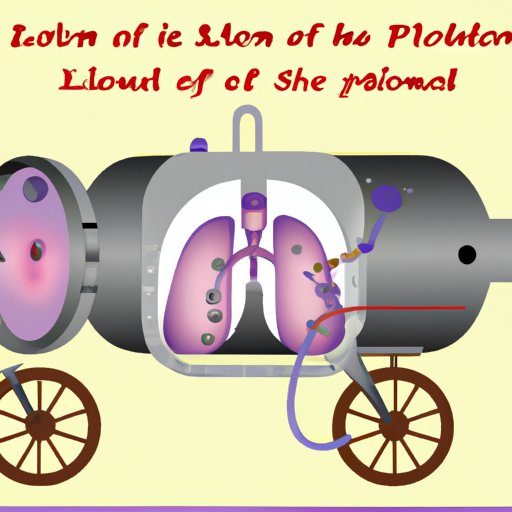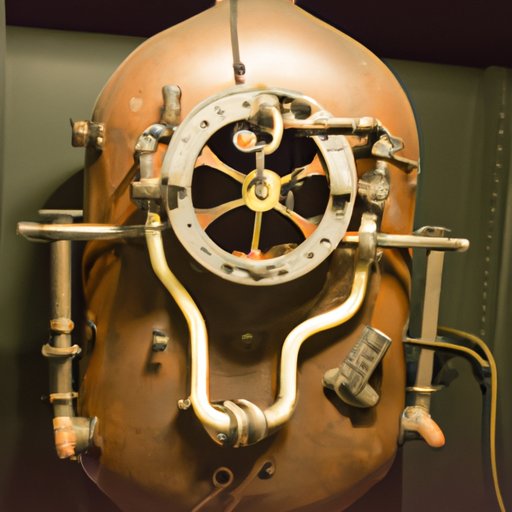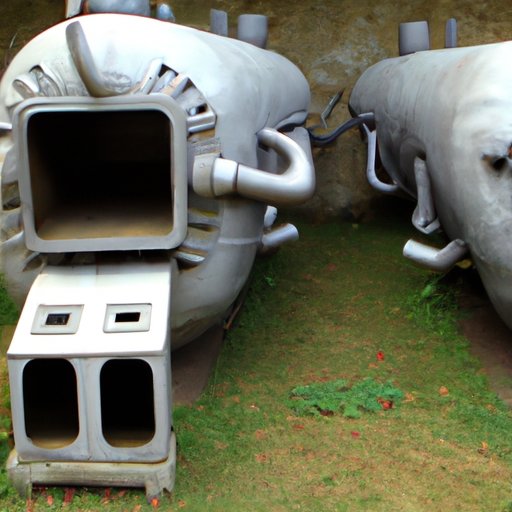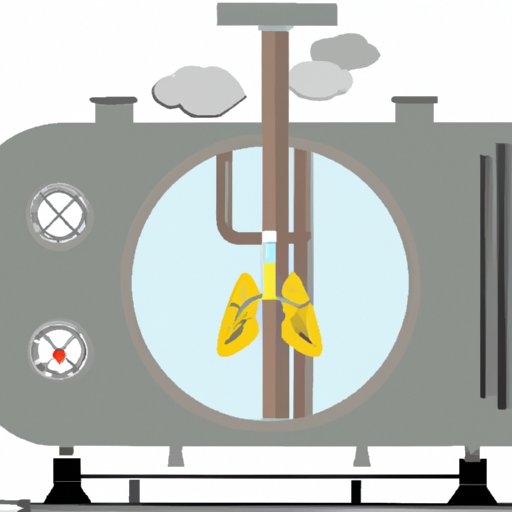Introduction
An iron lung is a device used to help people with certain respiratory illnesses breathe. It is also known as a negative pressure ventilator. The iron lung was invented in 1928 as a response to the polio epidemic that swept through the United States in the early 20th century. This article will explore the history of the iron lung and its impact on treating polio patients.
History of the Iron Lung and Its Invention
The iron lung was invented by Philip Drinker and Louis Agassiz Shaw in 1928. The two men developed the machine as a response to the severe polio epidemic that was ravaging the United States at the time. The iron lung was originally designed as a tool to help polio patients breathe by providing them with a source of negative pressure. By creating a vacuum around their bodies, the iron lung would draw air into their lungs and enable them to breathe.
At the time, there were no other treatments for polio, so the invention of the iron lung was seen as a breakthrough. Initially, the iron lung was used to treat patients who had become paralyzed from the disease. As the polio epidemic worsened, the iron lung became an essential tool for treating polio patients.

The Role of the Iron Lung During the Polio Epidemic
During the height of the polio epidemic, the iron lung was used to treat thousands of patients. It was used to provide patients with a source of negative pressure, which allowed them to breathe more easily. For those who had become paralyzed due to the virus, the iron lung provided a way to keep them alive until they could recover.
The iron lung also provided a way to reduce the mortality rate from polio. By providing a steady supply of oxygen, the iron lung enabled polio patients to survive longer. Additionally, the iron lung helped improve the quality of life for polio survivors. By enabling them to breathe more easily, the iron lung allowed them to live more comfortably.
How the Iron Lung Worked
The iron lung was a large metal cylinder that contained a patient inside. The patient was placed inside the cylinder and sealed shut. Once sealed, the iron lung would create a vacuum around the patient’s body. This vacuum would pull air into the patient’s lungs, allowing them to breathe more easily.
In addition to the vacuum, the iron lung also included a number of medical procedures that needed to be performed in order for it to work properly. These procedures included the use of medications, suctioning, and mechanical ventilation. All of these procedures were necessary in order for the iron lung to function correctly.

Advances in Technology and the Decline of the Iron Lung
As medical technology advanced, more effective treatments for polio were developed. Vaccines were developed that effectively prevented the spread of the virus, while other treatments such as physical therapy and medications were developed to help polio survivors regain strength and mobility. As these treatments became available, the need for the iron lung declined.
Additionally, the introduction of mechanical ventilators made the iron lung obsolete. Mechanical ventilators were much more efficient than the iron lung, and were able to provide a greater level of care for patients suffering from respiratory illnesses. As mechanical ventilators became more widely available, the iron lung was no longer seen as a necessary treatment for polio patients.

The Legacy of the Iron Lung
The iron lung has left a lasting legacy on public health and modern medicine. By providing a way to treat polio patients, the iron lung helped reduce mortality rates from the disease. Additionally, the iron lung helped improve the quality of life for polio survivors by enabling them to breathe more easily.
The development of the iron lung also served as a catalyst for further advances in medical technology. The medical procedures involved in using the iron lung led to the development of more effective treatments for respiratory illnesses, including the mechanical ventilator. The development of the mechanical ventilator has had a profound impact on modern medicine, as it has enabled doctors to provide a higher level of care for patients suffering from respiratory illnesses.
Conclusion
The iron lung was an important invention that helped reduce mortality rates from polio during the 20th century. It provided a way to treat polio patients and improved their quality of life. Additionally, the development of the iron lung served as a catalyst for further advances in medical technology, leading to the development of more effective treatments for respiratory illnesses. The legacy of the iron lung lives on today, as it continues to serve as an important reminder of the power of medical innovation.
(Note: Is this article not meeting your expectations? Do you have knowledge or insights to share? Unlock new opportunities and expand your reach by joining our authors team. Click Registration to join us and share your expertise with our readers.)
